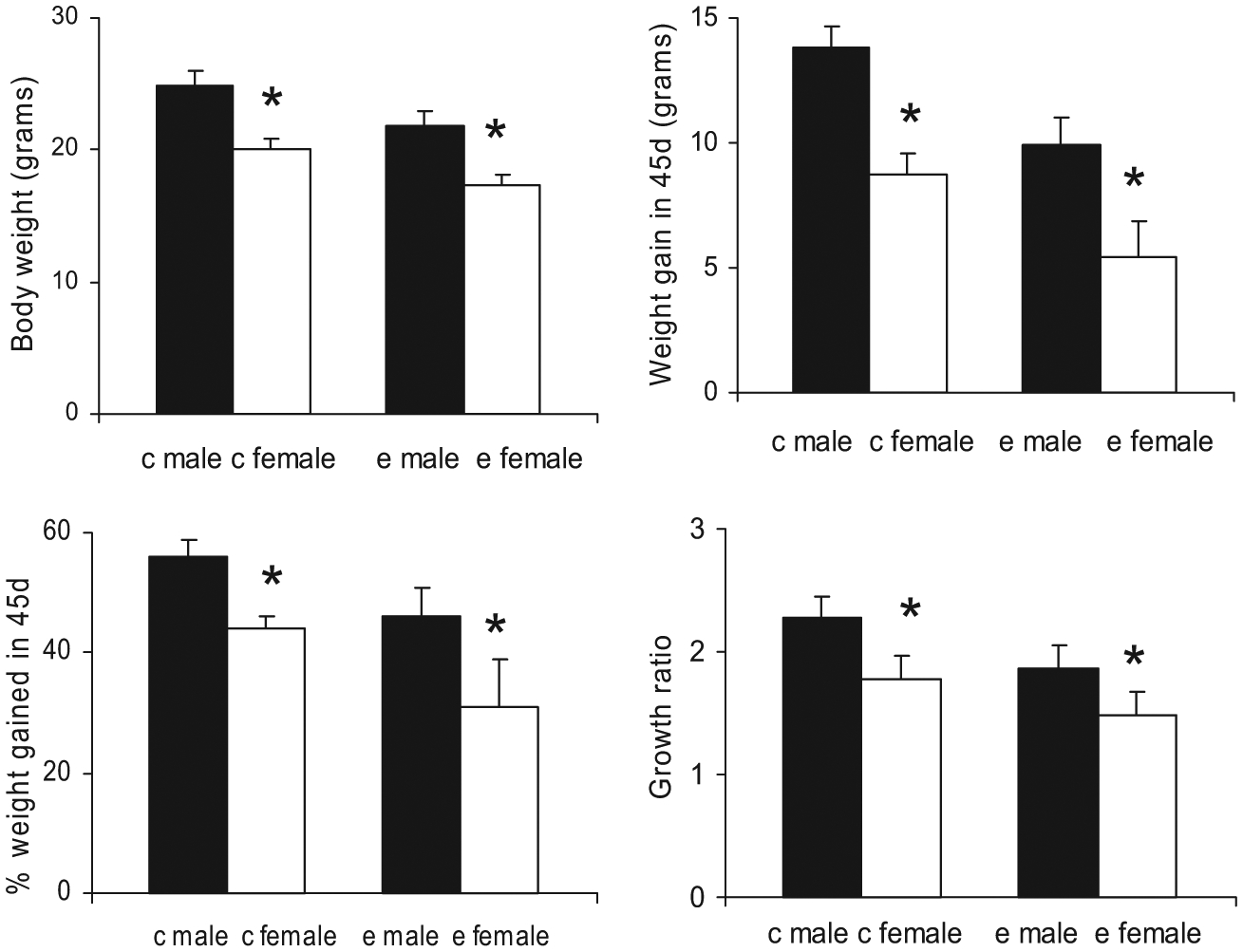Fig. 5.

Adolescent body weight growth (from P25 to 70) in both control mice and ethanol-treated mice are gender-specific. Upper left panel: Mice body weight at P70, control males and females are on left, ethanol males and females are on right; upper right panel: amount of weight gain in the 45 days period (between P25 and 70); lower left panel: the % of body weight gained in the 45 days period; lower right panel: growth ratio. Male mice grew significantly more than females from P25 to 70 regardless of ethanol treatment, indicating that the underlying adolescent growth process remained gender-specific despite the ethanol treatment. The * indicates that the difference between the open bar and the filled bar is statistically significant (p < 0.01).
